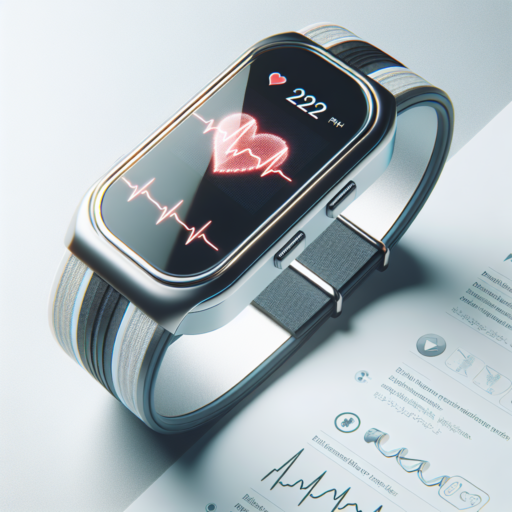What is the most accurate heart rate monitor?
Finding the most accurate heart rate monitor is essential for athletes, fitness enthusiasts, and individuals concerned about their heart health. The accuracy of a heart rate monitor can greatly affect how individuals tailor their exercise routines and track their progress over time. Numerous factors contribute to the precision of these devices, including the technology used, the placement on the body, and the specific activities for which they are being used.
Among the various options available, chest strap heart rate monitors are widely recognized for their high level of accuracy. These monitors work by detecting the electrical signals your heart produces each time it beats. Compared to their wrist-worn counterparts, chest straps provide closer proximity to the heart, resulting in readings that are generally more precise and less susceptible to discrepancies caused by movement or poor contact.
However, advancements in technology have significantly improved the accuracy of wrist-worn heart rate monitors. Latest models incorporate optical heart rate sensors that use light to measure blood flow through the skin. While there may be subtle differences in accuracy between these and chest straps, especially during high-intensity activities, they offer the advantage of convenience and continuous monitoring, making them a popular choice among fitness enthusiasts.
What is the normal heart rate by age?
Understanding the normal heart rate by age is crucial for monitoring your heart health. The heart rate, measured in beats per minute (bpm), can vary significantly depending on several factors including age, fitness levels, and overall health status.
Infants and Children
In the early stages of life, the heart beats faster than in adulthood. Newborns, for instance, have a normal heart rate ranging from 120 to 160 bpm. As children grow, their heart rate gradually decreases. By the time they reach 10 years old, the average heart rate falls into the range of 70 to 120 bpm, aligning more closely with adult norms.
Adults
For adults aged 18 and over, a normal resting heart rate lies between 60 to 100 bpm. However, athletes and those with a higher degree of physical fitness often exhibit lower heart rates due to more efficient heart function. It’s not uncommon for highly trained athletes to have resting heart rates as low as 40 bpm.
Elderly
As individuals age beyond 65, the normal heart rate range remains largely consistent with that of younger adults, but it’s important to note that medical conditions affecting the heart can become more prevalent. Hence, monitoring heart rate and maintaining a healthy lifestyle become increasingly important with age.
What is a normal heart rate monitor?
A normal heart rate monitor is a device designed to provide real-time data on the beating rhythm of an individual’s heart. This sophisticated tool is primarily used for tracking and analyzing the heart’s performance during various activities or at rest. Its functionality is pivotal for athletes, fitness enthusiasts, and individuals with specific health conditions that require close heart rate monitoring.
The utility of a normal heart rate monitor extends beyond merely showing the number of heartbeats per minute. It can guide users in maintaining the optimal heart rate zone for achieving their fitness goals, whether it be fat burning, cardiovascular improvement, or endurance training. By doing so, it allows individuals to tailor their exercises with precision, maximizing the benefits of their workouts and minimizing the risk of overexertion or injury.
Modern heart rate monitors come in various forms, including chest straps, wristbands, and even smartwatches, each offering a different level of accuracy and comfort. They employ technologies like electrical pulse detection or optical sensors to measure the heart’s activity, providing feedback that users can analyze to improve their health and fitness regimen.
No se han encontrado productos.
What is the difference between a pulse monitor and a heart rate monitor?
While both pulse monitors and heart rate monitors may seem synonymous to many, they serve in tracking one’s health with subtle yet significant distinctions. The core difference lies in the methodologies they employ for measuring and the specific features they offer. Understanding these nuances can enhance how individuals monitor their physical well-being during exercise or daily activities.
Pulse monitors, often simplistic in design, measure the blood flow through the arteries to give a pulse rate reading. This measurement is commonly acquired through touch, with sensors placed on areas like the wrist or a finger. On the contrary, heart rate monitors are more sophisticated, using electrical signals to precisely capture the heart’s activity. This enables not just a recording of beats per minute but an intricate analysis of heart rhythm and health over time.
The choice between a pulse monitor and a heart rate monitor hinges on the depth of data and precision one requires. For casual fitness enthusiasts looking for a basic understanding of their body’s response to exercise, pulse monitors offer a straightforward solution. In contrast, serious athletes or individuals with health concerns might prefer heart rate monitors for comprehensive insights. These devices can track heart rate variability, recovery heart rate, and other critical metrics beyond mere pulse readings, providing a fuller picture of cardiovascular well-being.



